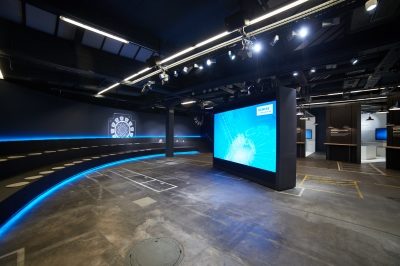Siemens Presents Arena of Digitalization in Electric Motor Plant

Electric motors for industrial use have been manufactured at the Siemens site in Bad Neustadt an der Saale for 80 years. Digitalization is playing an increasingly important role at this site. For this reason, the plant is going to be developed as a showcase factory for digitalization in metalworking. In the new "Arena of Digitalization" covering an area of more than 800 square meters, Siemens is now showing customers and partners how digitalization is used in metalworking and motor production and what results can be achieved with it. In addition, using its own development and the way production has grown over many years as an example, the showcase factory demonstrates how digitalization already offers advantages in terms of productivity and efficiency for the discrete manufacturing industry.
The "Arena of Digitalization" was opened by Klaus Helmrich, member of the managing board of Siemens AG, Jan Mrosik, CEO of Siemens' digital factory division, Wolfgang Heuring, CEO of Siemens' motion control business unit, and Peter Deml, head of the electric motor plant in Bad Neustadt an der Saale.
"In the light of advancing digitalization and the associated requirements resulting from it, industry faces entirely new opportunities and possibilities," said Helmrich. "These all center on a more and more growing individualization of products as well as of quality, efficiency, speed and flexibility. Companies in the manufacturing sector are having to respond to increasingly differentiated customer requirements and are therefore reliant on flexible production right down to a batch size of one."
As a response to these challenges, Siemens is offering its customers from the manufacturing sector a comprehensive portfolio of products and solutions under the digital enterprise umbrella. Mrosik explains: "Our solutions cover the entire value chain, from product design, production planning and production engineering to production execution and services. Spanning all these are Teamcenter, a database that is accessible to all parties involved, and MindSphere, a platform for life-cycle and data analytics. If this production process is integrated and digitalized from end to end, a company can achieve substantial overall optimization outcomes."
At the electric motor plant in Bad Neustadt an der Saale, Siemens uses six specific topic areas to show how products and solutions from its own portfolio can be implemented step by step in a production process that is already up and running.
"Frequent innovations, individually tailored products, and the resulting high degree of product diversity: these are the challenges which the production process at the electric motor plant in Bad Neustadt has to rise to today," said Heuring. "Digitalization is helping us to tackle these challenges successfully. We plan to use the 'Arena of Digitalization' and the example of our own manufacturing to demonstrate to our customers – machine builders as well as machine operators – the advantages that using Siemens digitalization technologies provides. Digitalization solutions will also help us considerably in continuing to maintain a leading position among our global competitors in future and, last but not least, to secure jobs in the region in this way. We want to share our knowledge and experience of digitalization here at this location with our customers from the machine tool industry. That is our goal."
"Digitalization of the processes in the plant is a process of continuous development. Initially, we focused on using digitalization in manufacturing to create consistency throughout the CAD-CAM/CNC chain, including tool and NC program management. Systems that had previously functioned separately were synchronized and fitted with digital interfaces. In addition, we implemented new tools, optimized our NC programs and made various design adjustments," said Deml.
As a result, the electric motor plant in Bad Neustadt an der Saale has so far successfully achieved 40 percent faster throughput times where processes have been modified, shortened correction loops by 50 per cent and increased ramp-up times for new machines by 60 percent.





